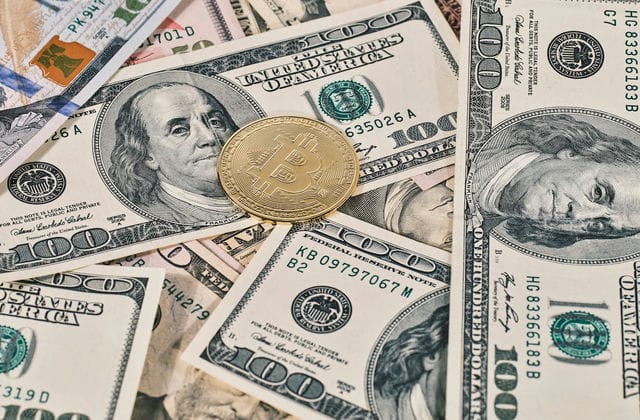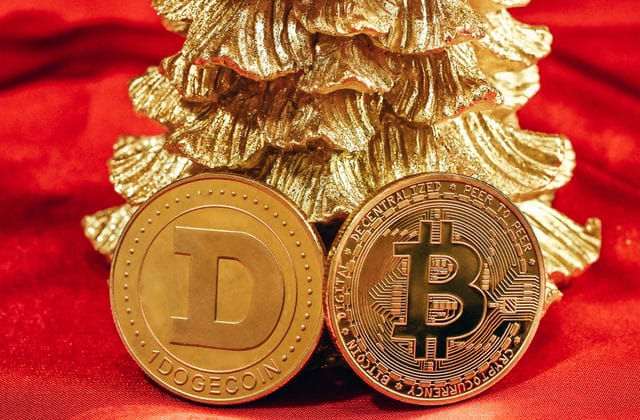Introduction to the value of Bitcoin
Bitcoin provides an efficient way to transfer money over the internet and is regulated by an open and transparent decentralized network, unlike traditional fiat currencies controlled by central banks. As opinions differ on how to assess the value and price of Bitcoin, we explore what the value and price might be, assuming there is further widespread adoption of Bitcoin.

The monetary value of Bitcoin
Traditional currencies can store value and act as a unit of denomination with a low risk of devaluation. Throughout human history, commodities or precious metals have often been used as a form of payment because they were considered to have a relatively stable value. However, rather than requiring individuals to carry gold or other earlier forms of money, society eventually opted to mint money for alternative use. Despite being substitutes, they were still made of metals with a long shelf life and little risk of devaluation, enough to qualify as a unit of value storage.
In modern times, minted money usually takes the form of banknotes, the intrinsic value of which differs from that of coins made of precious metals, and these types of banknotes rely on the fact that they are 'representative', meaning that each can be exchanged directly for a specified amount of goods, as is now the case with much of the world's legal tender. Fiat currencies are issued by governments and are not backed by any commodity, but are based on the credit of individuals and governments, and many societies have found that fiat currencies are the most durable currencies and have the least likelihood of devaluation or loss of value over time.
Bitcoin vs. fiat currency, a comparison of 5 key features
In addition to the question of whether it is a store of value, a successful currency must also meet the related conditions of scarcity, divisibility, utility, transportability, durability and non-counterfeit ability. The differences between Bitcoin and these fiat currencies are discussed below, one by one.
1, Scarcity
When Bitcoin was launched in 2009, the developers capped the supply of tokens at 21 million in the agreement. 2020's current supply of Bitcoin is approximately 18 million, with Bitcoin production decreasing by half approximately every four years.
Bitcoin is supplied in a different way to most fiat currencies. The legal tender supply is usually divided into M0, M1, M2 and M3. M0 is the currency in circulation, M1 is M0 plus demand deposits, M2 is M1 plus savings accounts and a small amount of time deposits, and M3 is M2 plus a large amount of time deposits and money market funds. As M0 and M1 are highly liquid and easy to use in business, they can be considered as units of medium of exchange, while M2 and M3 will be considered as units of value storage.
As part of their monetary policy, most governments maintain some flexible control over the supply of currency in circulation and adjust it according to economic factors. This is not the case with Bitcoin, although with a limit of 21 million coins coming up, it is hard to say exactly what will happen by then, and fortunately the last Bitcoin is not scheduled to be mined until around 2140. Often, scarcity can drive up the value. This can be seen with precious metals such as gold.
2, Divisibility
21 million bitcoins are far less than the amount of most legal tender in circulation in the world. However, bitcoins can be divided to a maximum of 8 decimal places, with the smallest unit being 0.00000001 bitcoins (= 1 Satoshi).
Bitcoin is much more divisible than the US dollar and most other fiat currencies. Whereas the US dollar can be divided into cents or 1/100th of a dollar, "Satoshi" is 1 / 100,000,000 of a BTC. it is this extreme divisibility that allows the scarcity of bitcoin to become apparent. If the price of Bitcoin continues to rise over time, users who only own a small percentage of Bitcoin can still participate in daily transactions. If there are no divisible lines, it will be difficult to use for most transactions.
3, Transportability
With exchanges, wallets or other tools, bitcoins can be transferred within minutes, regardless of the size of the transaction, at a fraction of the cost. Traditional financial transfers can take days and have high brokerage fees. Liquidity is an important property of any currency. There are drawbacks, mining large amounts of bitcoins, maintaining the blockchain and processing transactions requires a lot of electricity.
4, Durability
Durability is the main issue with the actual form of traditional fiat currency. Dollar bills, while strong, can still be torn, burned or rendered unusable. Cryptocurrencies do not suffer from these physical injuries in any of these ways. As a result, Bitcoin has great value. However, this does not mean that bitcoins cannot be lost. If a user loses their private key, the bitcoins in the corresponding wallet may no longer be valid for use. However, the bitcoins themselves will not be destroyed and will continue to be recorded on the blockchain.
5, Unforgeability
Bitcoins are very difficult to counterfeit due to the blockchain consensus mechanism. The traditional method of counterfeiting electronic money is to perform what is known as double-spending. This means that the same electronic currency is spent more than twice. Unlike a physical currency such as a coin, electronic files can be copied, and through counterfeiting, the act of spending does not remove the property owned by the spender, i.e., there is an extra payment record, or the recipient receives multiple payments, as if it were a counterfeit, causing inflation and devaluation of the currency, which in the long run will lead to a loss of trust by the user.

Double spending is unlikely to occur in the Bitcoin network, as transaction information is monitored by all users, necessitating the so-called 51% attack, in which a group of miners control more than half (> 50%) of all network power and thus falsify records. However, such an attack on Bitcoin would require a lot of effort, money and computing power, making such a possibility highly unlikely.




























